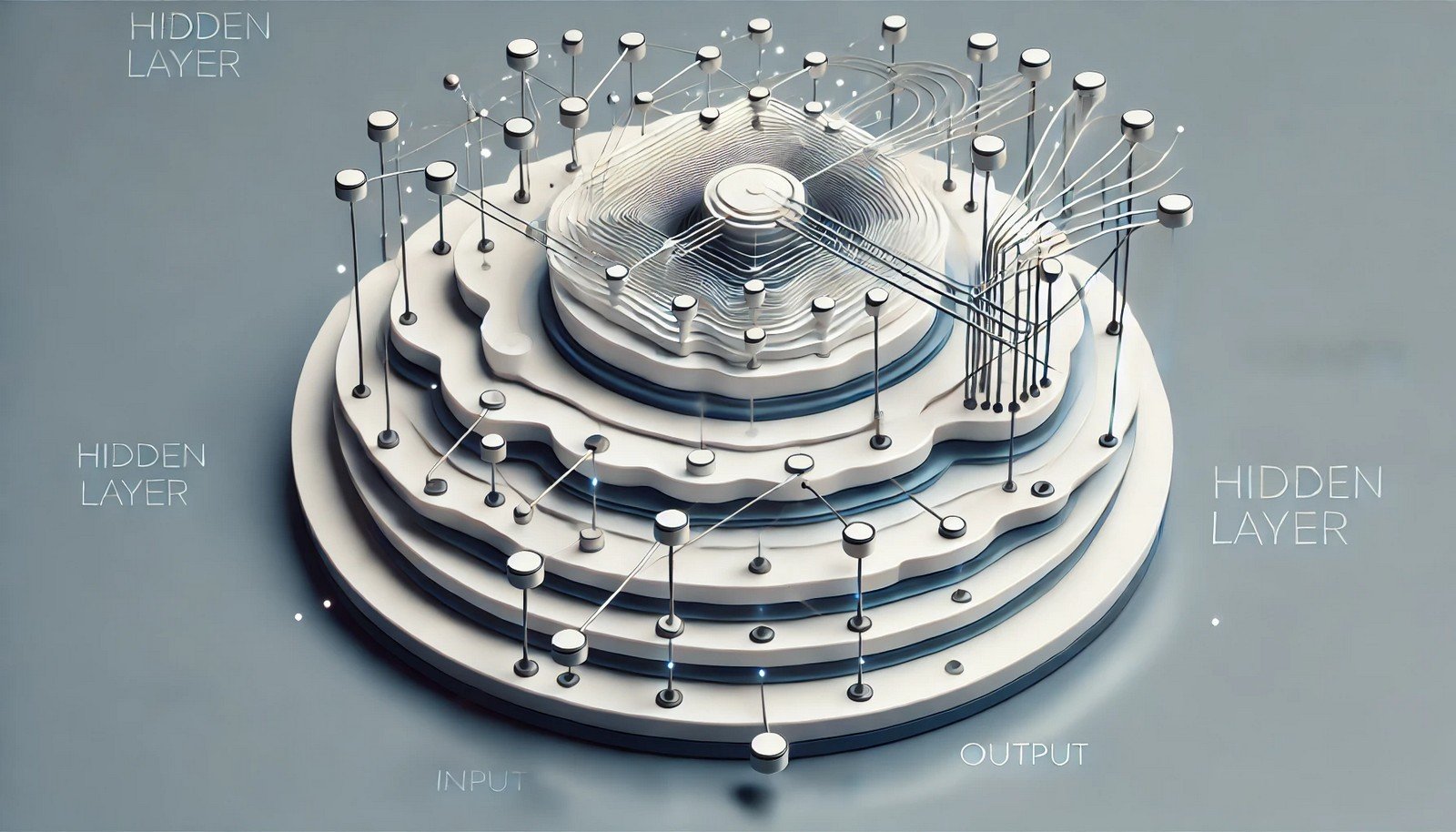Hidden Layer in Neural Networks

Quick Navigation:
- Hidden Layer Definition
- Hidden Layer Explained Easy
- Hidden Layer Origin
- Hidden Layer Etymology
- Hidden Layer Usage Trends
- Hidden Layer Usage
- Hidden Layer Examples in Context
- Hidden Layer FAQ
- Hidden Layer Related Words
Hidden Layer Definition
A hidden layer in a neural network is an intermediate layer positioned between the input and output layers. Unlike these layers, the hidden layer doesn't directly interact with the outside environment; instead, it processes and transforms the input data using weights and biases to generate meaningful internal representations. The more hidden layers a network has, the more complex patterns it can capture, a key attribute in deep learning where multiple hidden layers are stacked. The activation functions in hidden layers, such as ReLU or sigmoid, help introduce non-linearity, enabling the network to solve complex problems.
Hidden Layer Explained Easy
Imagine your brain as a busy office where information comes in, gets sorted, and decisions are made. The hidden layer is like the middle office where people sort information and decide what’s important before passing it along. This helps computers "think" in steps to understand pictures, sounds, or even language.
Hidden Layer Origin
The concept of hidden layers emerged from early neural network studies, particularly with the development of the multilayer perceptron (MLP) in the 1980s. With advancements in computational power, hidden layers have become essential in modern AI applications, especially in deep learning architectures.
Hidden Layer Etymology
The term "hidden" in hidden layer refers to the fact that this layer does not directly interact with the outside data but only participates in internal computations within the neural network.
Hidden Layer Usage Trends
In recent years, hidden layers have gained prominence with the rise of deep learning. Models with dozens or even hundreds of hidden layers, called deep neural networks, are used in image and speech recognition, language translation, and autonomous driving. This trend highlights the increasing need for complex architectures to handle data-rich tasks.
Hidden Layer Usage
- Formal/Technical Tagging:
- Neural Networks
- Deep Learning
- Machine Learning - Typical Collocations:
- "deep hidden layer"
- "multi-layered network"
- "activation function in hidden layers"
Hidden Layer Examples in Context
- The hidden layer in a neural network allows it to recognize more intricate features within an image.
- Deep learning uses hidden layers to understand language context, enabling machines to translate sentences accurately.
- In self-driving cars, hidden layers process sensory data to help make safe driving decisions.
Hidden Layer FAQ
- What is a hidden layer?
A hidden layer is an internal layer in a neural network that processes input data to create new patterns before passing it to the output layer. - How do hidden layers work?
Hidden layers use weights, biases, and activation functions to transform input data, allowing the network to identify patterns. - Why is it called a "hidden" layer?
It’s called "hidden" because it does not interact directly with the external data, only within the network. - How many hidden layers can a neural network have?
There’s no strict limit; some deep learning models have hundreds of hidden layers for complex tasks. - What activation functions are used in hidden layers?
Common activation functions include ReLU, sigmoid, and tanh, each adding non-linearity to the network. - Why are hidden layers important in AI?
Hidden layers enable neural networks to recognize complex data patterns, making AI applications more effective. - Can you have a neural network without hidden layers?
Yes, but it will be limited in complexity and unable to handle non-linear relationships. - Do hidden layers make models slower?
Yes, more hidden layers typically increase computation time but lead to more accurate results. - What is the role of weights in hidden layers?
Weights adjust the importance of inputs, helping the layer learn how to transform data. - How do hidden layers improve neural networks?
They allow the network to capture abstract patterns in data, improving model accuracy.
Hidden Layer Related Words
- Categories/Topics:
- Neural Networks
- Artificial Intelligence
- Machine Learning
Did you know?
Hidden layers have been key to breakthroughs in AI, such as AlphaGo's victory over a human champion in the complex game of Go. Hidden layers allowed the model to analyze millions of possible moves and strategize effectively.
PicDictionary.com is an online dictionary in pictures. If you have questions or suggestions, please reach out to us on WhatsApp or Twitter.Authors | Arjun Vishnu | @ArjunAndVishnu

I am Vishnu. I like AI, Linux, Single Board Computers, and Cloud Computing. I create the web & video content, and I also write for popular websites.
My younger brother, Arjun handles image & video editing. Together, we run a YouTube Channel that's focused on reviewing gadgets and explaining technology.



Comments powered by CComment